#The Legend of Zelda (1986) is Not a real Zelda game because it features an open world
Explore tagged Tumblr posts
Text
Zelda II is not a real Zelda game because it‘s a side scroller and features role playing elements
Oracle of Ages and Oracle of Seasons are not real Zelda games because there‘s two of ‘em like some sort of pokemon game
I'm already seeing some people suggest that EoW is not a "real" Zelda game due to the new mechanics and lessened focus on combat. And like it's actually crazy to me how people call themselves Zelda fans but baulk every time the series gets a shake up (as if the devs haven't been trying to shake up the formula since Zelda Fucking Two.)
Anyway, with this I would like to start a thread called "Why Your Favourite Zelda Games Aren't Actually Zelda Games." I'll start:
Ocarina Of Time isn't a true Zelda game because Zelda shouldn't be 3D. The games began as 2D, and to change mediums is betraying the series roots and core gameplay.
Now, continue:
#The Legend of Zelda (1986) is Not a real Zelda game because it features an open world#and doesn‘t feature a linear story#ok im done lmao
520 notes
·
View notes
Text
Breath of the Wild: 'great game! Bad Zelda...'
Really frustrates me when people use the phrase 'great game, bad Zelda game' to describe Breath of the Wild, because to me that's just categorically wrong. I'm not even doing the 'Zelda has always had drastically different gameplay and atmosphere' take, in fact I'm taking that further and all the way back around.
Breath of the Wild is closer to games like the original Legend of Zelda and Ocarina of Time, the cornerstones of different eras of the franchise, both in game design and feel/atmosphere, than any other game in the series. You're seriously, with a straight face, going to tell me that Twilight Princess or Skyward Sword feel more like the original 1986 game than Breath of the Wild?
I'm saying this from a relative position of knowledge, too, I've played every single game in the series and I genuinely hold firm that BOTW is more true to the franchise's roots than Spirit Tracks and The Minish Cap, and I genuinely can't understand how you can think otherwise.
The first thing that comes to mind is that it's a full open world game, as opposed to the 'open level' design of previous titles, mostly relegated to the odd side area or breif backtrack. But even then surely it's impossible to feel like going open world is anything more than a natural evolution of a series that's clearly been aching to let you explore it's world for multiple decades?
Let's look at the arguments often used, then, shall we? The biggest being the changing from the typical structure of having you go to four temples to amass enough power to defeat Ganon. Instead, this game has you... Go to four temples to amass enough power to defeat Ganon.
Now, to be fair, these temples, or divine beast, as they're called here, do all suffer from a major case of aesthetic monotony. Whereas previous games all featured temples that would always feel hugely different from one and other, here they all look basically the same at a glance, this is a major problem, however it is purely and only a problem with the aesthetics of the temples. Beyond a breif glance, each temple has their own unique mechanics and systems that divide them, they all have unique puzzles and bosses, and they even take the same ammount of time to beat as a temple from one of the previous games, though with the aid of a smoother gaming experience thanks to some more modern controls and design.
The idea that the divine beasts 'dont cut it' as temples ends up feeling like a shallow scapegoat in lieu of any real criticism of the game itself, so let's look at other criticisms often levied against the game...
Firstly, the weapon segregation system. I get this one, some people just don't like having to think in their games, they like to press the buttons when they're told to press them on screen and not have to think critically about combat scenarios. Sometimes I like to lay back and take it easy when I'm gaming, too. However, not only does this system force you to expand your options and try new ways of approaching combat and weapons you can use, but the entire world, enemy health and AI, and the structure and layout of encounters is built around this system. Without it, the combat would be boring, it'd be the same 3-hit combo plus jump (with a dodge) the series has been coasting off since the last time the game returned to its roots and did something new built off them (Ocarina).
So this, too, is an empty criticism, and at this point I start to wonder if the people saying this ever even liked Zelda to begin with.
One criticism I've heard just one time was that the story in this game isn't as engaging as in previous games. I don't know if I can even comment on this because it is a comment the bewilders me; Zelda is a series that famously is light on story, it's a frequently made joke about the series that the story is just an excuse for a save-the-princess adventure. Were you really playing Ocarina or Wind Waker and getting invested in the story? If so, good for you, but I just can't imagine it... Even in one of my favourites, Majora's Mask, the story is only interesting when it's actually happening, which is for about 10% of the game, when skull kid is on screen, the rest of the game is just 'interesting enough' busywork to get to that point, as with basically every other game in the series. Admittedly, the series got better with time, Skyward Sword had entertaining character dialogue, and there were plenty of points in Twilight Princess where I became extremely engaged with the story itself and the characterisations of certain characters, but to say that Breath of the Wild; which consistently gives you more story and builds the characters more than almost every other game in the series, is somehow lighter on story than its predecessors is frankly laughable.
And now I'm out of points, I've not heard any other major or salient arguments as to why this is a 'bad Zelda game', it's just nonsense, but seems to be an opinion held by a large majority of terminally online gamers with a tendancy towards elitism. A lot of people I know personally even hold this belief, and it just doesn't hold water no matter how I've had it spun for me.
It's strange, in a year when Mario Odyssey took the modern Mario formula and built upon it, moving even further away from the original vision for the series, BOTW made a shift back towards the cornerstones of the entire franchise, deconstructed the whole formula and rebuilt it from the ground up, better and truer than ever. Yet somehow people still say, every time the game is brought up, a sad line made up by YouTubers and video essayists; 'great game, bad Zelda game'
#oops its a vent post#hope no one sees this#because at least 5 people I know will think this is about them specifically#but its actually just about the take itself#but I know too many people who take anything and everything as a personal attack#anyway#zelda#botw
0 notes
Text
あああ - Japan’s #1 games, 1987
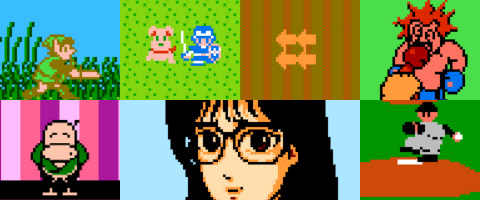
[A recurring feature each time I complete a year in the UK, in which I catch up with the games to have been #1 in the archived Japanese sales charts of that year, as reported in Famitsu. Thanks to Game Data Library for running the resource that makes finding these out easy. We have a few years of incomplete data ahead, but it’s still an interesting picture]
The Legend of Zelda 2:リンクの冒険 / The Legend of Zelda 2: Link’s Adventure (Nintendo, Famicom)


We surely only missed the first Legend of Zelda on a matter of timing, and here is the sequel and black sheep of the series. All of the RPG and platform elements added to the Zelda model pretty much disappeared afterwards, never to return. ‘Action game with a bit of RPG progression’ is a concept that will very much eventually find its time and place, however.
ドラゴンクエストII 悪霊の神々 / Dragon Quest II: Gods of the Evil Spirits (Enix, Famicom)

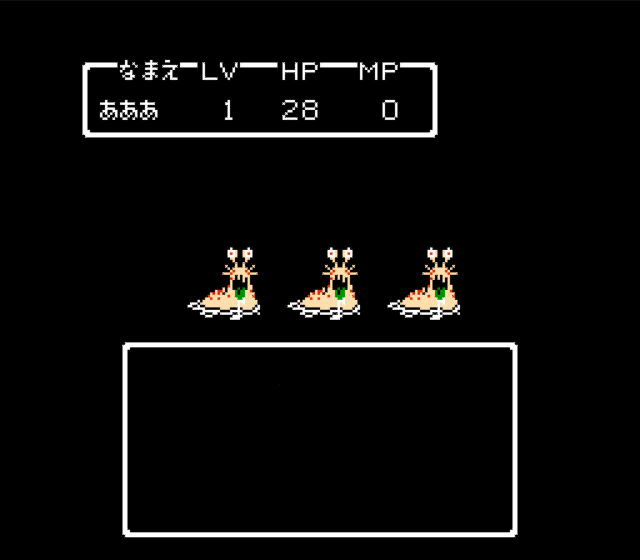
Not yet at the height of the insane Japanese sales numbers future entries would get, but the fantasy RPG series that established most of the traditions of the genre it would hold on to was already establishing itself as a phenomenon. Pretty much everything was in place, starting from the artwork from Akira Toriyama of Dr. Slump and Dragon Ball manga renown.
勇士の紋章 ディープダンジョン / Yushi no Monsho: Deep Dungeon (HummingBirdSoft, Famicom)
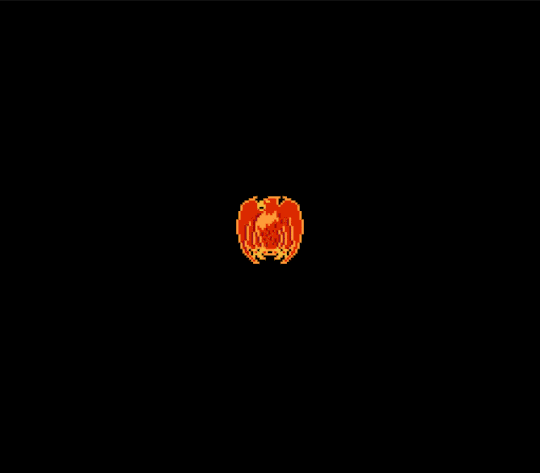
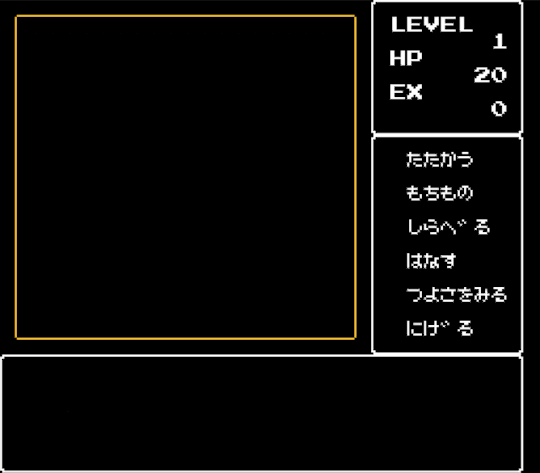
Our third successive RPG or RPG-adjacent game is a very different kind of old-school, with a first person dungeon-crawling viewpoint and dingy palette that makes it the most brutally ugly by a long way.
Family Boxing (Namco, Famicom)

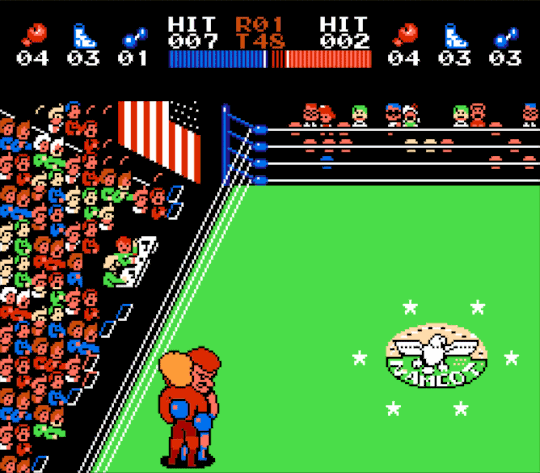
Family sports games were all over the place! This one was an arcade conversion known as Ring King in the US and King of Boxer here.
ふぁみこん昔話 新・鬼ヶ島 / Famicom Fairytales: New Demon Island (Nintendo, Famicom)

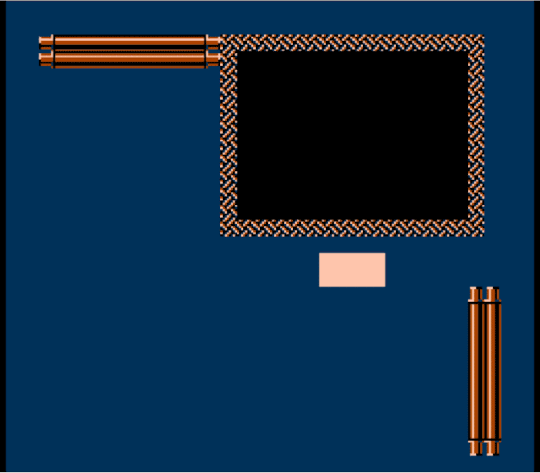
This is one of the hardest games to figure out much about (not least because I had trouble getting it to run) but has some beautiful traditional artwork to illustrate its tales.
中山美穂のトキメキハイスクール / Miho Nakayama's Heartbeat High School (Nintendo, Famicom)

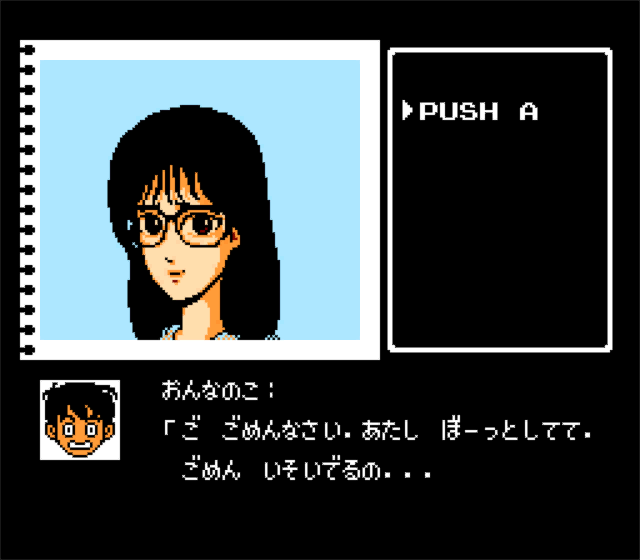
My favourite discovery from this feature so far. It’s a dating game featuring a school student who bears a resemblance to Miho Nakayama of the title, a real-life pop idol. The first character you meet after starting playing gives a phone number which players could take outside of the game and dial in the real world to hear the recorded voice of Nakayama, giving advice on the game (it is a slightly mind-bending exercise to try to imagine a world where a UK equivalent existed and was a similar success -- for a possible star my mind went first to Kylie, but scanning the list of UK #1 singles of 1987 presents the irresistible concept of Rick Astley’s Heartbeat High School). All of that isn’t even the best bit, though. This game was published by Nintendo and developed by Square, and lead figures in its development include Yoshio Sakamoto, director of Super Metroid, and Hironobu Sakaguchi, creator of Final Fantasy. It has music from Nobuo Uematsu, composer for Final Fantasy and soundtrack legend. It is a one-game argument against there being some big divide between types of games and the people making them.
プロ野球ファミリースタジアム ‘87 / Pro Baseball Family Stadium ‘87 (Namco, Famicom)
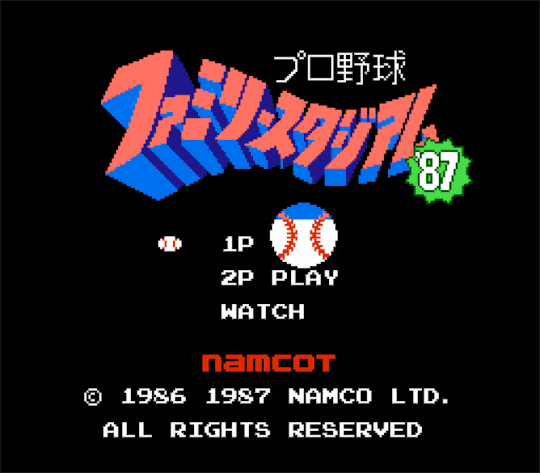
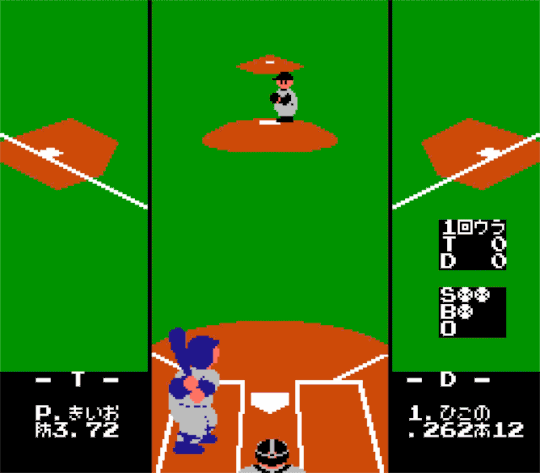
Japan got in early on lucrative yearly updates for sports games; this is virtually indistinguishable from the original 1986 game.
#1987#Famicom#Japan#retrogaming#8bit#the legend of zelda#Dragon Quest#Deep Dungeon#Family Boxing#Famicom Fairytales#Tokimeki High School#Pro Baseball Famitsu#AAA Japan
2 notes
·
View notes
Text
Legend of Zelda: Breath of the Wild – The Art of Adventure

For a game about adventure, a major component is the element of exploration and discovery. The feeling of finding places that are new to the common understanding, or hidden, places that hold some secret or mystery. The importance of that secret is largely irrelevant (though being continually underwhelmed can get frustrating after a while); the lure of it is the thing.
The original Legend of Zelda understood this, but it wasn’t so much a matter of design as it was a matter of necessity. There are only so many ways you can go about making an epic adventure when you only have an 8-bit processor to do it. So you’ll be vague and mysterious and unfathomable because what else can you do? You’ll have that lure of mystery and secrets no matter what you do, if you’re even halfway competent.
It’s all over the place in Breath of the Wild.
More below the cut.

The game gives you the major objectives and side quests from various characters you meet throughout the game, but like most open-world games, it lets you pursue them at your leisure. Far more than goose-step you through the main beats of the story, Breath of the Wild wants you to take time poring over its world, exploring all its nooks and crannies, finding the wonder in it. It doesn’t go out of its way to point things out to you. It just puts things there, hoping you’ll find them in order to be amazed by them, and structures itself so that you’re bound to run across at least some of them.
I was talking with a friend at work about the original Legend of Zelda in the context of Breath of the Wild. I told him I’d always liked exploring the western area of the original game the best, because there was a feeling of really striking out into the true wilderness. The eastern half has occasional structures that suggest human (well, Hylian) habitation, even if only somewhere in the past, and even if those signs are strange and kind of monstrous.

The western end of Hyrule, by contrast, lacks a lot of these. Or at least, that’s how I remember it. It’s just wilderness, mainly – rocks and mountains and forest. And tougher enemies. Granted, the worst things the game would ever throw at you still always lurked in dungeons. But the Octoroks and the other one- or two-hit creatures that roamed the eastern half of Hyrule were completely gone in favor of an increased density of moblins. And then you had these guys:

I know that doesn’t look too intimidating in eight bits, but the lynels weren’t anything to fuck with. In the original game, they were somewhat of a rude surprise. The kind of creature that, when you first encounter it, your initial reaction may be “OH FUCK OH FUCK OHFUCKOHFUCKOHFUCK RUN AWAAAAYYYY!” Which is not to say that they’re unbeatable. But they take a fair few hits, they throw sword beams pretty liberally – the kind you can only cast when you’re at full health, and if memory serves, their sword beams bypass your shield – and they hit like a truck if you haven’t gotten the blue ring. And all of this can be pretty alarming if you’re just wandering around looking for your next objective. The sudden sharp upswing in difficulty when you first spot one of these monsters is a feature, not a bug. This was early days; the developers couldn’t just straight-up tell you “Hey, don’t go that way!” The lynels served as a beefgate; if you felt particularly challenged by them, that was your one (and only) hint that you probably shouldn’t be running around in this area yet.
Lynels seem to have disappeared from the series bestiary following the first game. If they were in the second game, they were changed enough in appearance that I never realized what they were, and I know at the very least they were gone by the time Ocarina of Time rolled around. Which isn’t a problem, really. They weren’t exactly iconic, and enemies in video games exist to fill a niche – think of it as ecology of gameplay. But their reappearance and reimagining in Breath of the Wild makes a point, and it’s one well beyond tickling the nostalgic fancy of people like me who grew up being wowed by all that could be done with eight bits. This is Nintendo deliberately digging into the past and repurposing old ideas with new technology. Taking old characters and creatures and ideas and giving them new life, fleshing them out with everything they’ve learned – both in terms of technology and gameplay – over the last three decades*.

*I felt really, really old typing that. I had to check to make sure it’s true. Fuck me, but it is.
It feels at times like one of the overriding purposes of Breath of the Wild is to explore an alternate path of the evolution of the Legend of Zelda series. Think of it this way: In 1986, we had the original, the 8-bit classic, The Legend of Zelda. Then we had Zelda II: The Adventure of Link, which was and is the sort of black sheep of the family by virtue of its many changes to the form established by the original. But that exploration of alternatives was punished by the fanbase. The next game, Legend of Zelda: Link to the Past, was a return to the form established by the original. And that’s not necessarily bad! Certainly Link to the Past is an excellent game, the kind for which I don’t like to talk about its flaws, because – strictly opinion here – to bring them up even in passing seems to draw more attention to them than is deserved.
But you can see the pattern of the series being set up right here in the third entry. Gameplay mechanisms have changed again and again throughout the series, but the same overall structure has remained until very recently. And more important to my point is the fact that from Link to the Past onward, you are constantly being told where you need to go next and what you need to do. Oh, sure, there’s plenty of stuff to do off to the side, but your next goal is always clearly marked for you. You may have plenty of options to explore at any given time, of course, but the emphasis on your future actions is always clear. You always know where you must eventually go.
Legend of Zelda: Link Between Worlds was the first major change the series had seen in ages. And it’s clear now that it served as a sort of portent for Breath of the Wild. Maybe it felt safer for Nintendo to experiment in the handheld space first. If Link Between Worlds’s formula shake-up didn’t work out, they could retool Breath of the Wild to more closely adhere to the usual pattern. But Link Between Worlds was a wild success, as handheld games are measured, another one of those games like Link to the Past, where to speak of the flaws is to emphasize them more than they deserve. And so Nintendo got ambitious.

It really feels to me, at times, like Breath of the Wild is a game that fell out of another dimension, a parallel universe in which Nintendo kept pushing the sesries toward that open-ended exploring which was the bread and butter of the first game. But the difference here is that in the first game, it was vague and open and unclear by necessity, because the technology was limited and there was only so much you could do to nudge the player in the right direction. Breath of the Wild, meanwhile, extrapolates that openness that was unavoidable and asks “What if that vagueness and obtuseness wasn’t an obstacle to be gotten around, possibly with the help and advice of friends? What if it was the whole point?”
And so we have Hyrule reimagined. A kingdom beaten but not destroyed (yet) by its ancient foe. So much of the original game is present, thematically, in this one. The idea of Hyrule as a ruin – a kingdom gone back to grassland and forest and general wilderness, with tiny little communities tucked away wherever they can escape notice – is present here with a clarity that was missing in the first game. The map is not helpfully divided up into “rooms” of game area with clearly marked entrances and exits and pathways between. The map is like any map you’d find in the real world; it shows you the lay of the land; it lets you put down markers for points of interest and lets you figure out the path.
The entire environment is a character. It has a sense of purpose and presence that it has so often lacked in previous games. It was backdrop in most of the previous games; a place you had to go through to get to the places you wanted to be. Breath of the Wild makes the world of Hyrule its own place to be. It is one of the challenges in the game – scratch that, the main challenge – of the game, just as it was in the original. The difference is that it’s the whole point. You have to think when you’re going places. “Do I have the stamina to climb that cliff? Can I swim across that lake, or do I need to look for a raft or for shallow places to cross? How can I get around these enemies and over that hill without being detected?”
And so on, and so forth.

#zelda#legend of zelda#breath of the wild#botw#loz botw#link#nintend#switch#nintendo switch#seriously though this game
6 notes
·
View notes
Text
Final Fantasy XII has its good points and its bad points... but by far the biggest issue is just how much of a slog it is to navigate. A good RPG is broken up into three kinds of areas, with three kinds of gameplay: exploration in the overworld, low-stress downtime in towns, and... dungeoning, in dungeons. FFXII, however, treats all of its overworld areas as if they’re dungeons... and while you do explore these areas, you never really have a moment to breathe.
The areas are huge, requiring you to either find or buy a map of them (which only a few actually have), and forcing you to load a new area to find out what it is. More on that in a second. Battles happen in real time and are often unavoidable, and even if you flee, the monsters can continue to chase and attack you. What really makes these areas feel like dungeons, however, is your inability to fast-travel away from them.
For some reason, unless the game has failed to fill me in on a major mechanic, you’re only able to travel from one orange save crystal to another (usually near the entrance of major cities and the like), and it appears your ability to do so is limited by how many Teleport Stones you have... which as far as I can tell are a fairly uncommon enemy drop, because in the course of over thirty hours I’ve only found about twenty of them. You can also travel between two cities with an Aerodome, I guess, but at this point in the game I only know of two such cities... and that doesn’t do me much good when I’m in the middle of nowhere with my healers running on zero MP and an impossibly long trek back to the nearest city.
Which brinds me back to the “load a new area” thing I mentioned earlier.

The game is kinda helpful in that it reminds you what you’re supposed to be doing on the map screen, but sometimes, the information it provides is absolutely meaningless. Case in point, I need to hurry to Bur-Omisace. As it turns out, Bur-Omisace is not in The Feywood.
See, I was on my way to Mt. Bur-Omisace, which the map told me was a huge mountain somewhere to the east. As I made my way there, I ended up in a jungle, which had magic barriers on the paths to the south... but after coming across a barrier for a third time, I got a cutscene, found a hidden village, was sent on a quest to save a bunny girl from a mine, and eventually got an item that lets me get past the barriers. Great!
Able to cross the barriers, I explored the area to the south... and kept running into enemies that kicked my butt. Oof. Since it was always the same ability that took down my party members, it didn’t occur to me that I was under-leveled for this area and powered through, in the end having to flee from coeurls and dinosaurs to break through the next loading zone into... uh, The Feywood.
It was at this point that I decided to stop and look up where the mountain was, since my entire party was basically running on fumes and I didn’t want to press onward if the enemies would continue to be this strong and there wasn’t a save crystal. I haven’t gotten a clear answer even after looking it up, because this game’s overworld is a whole bunch of inkblots with weird names all strung together, but I *think* I was supposed to go to where I found the third barrier, which I had forgotten about completely because I was more focused on filling in the parts of the map beyond the other barriers (and because several hours of playtime and real-world days had passed).
Now I’m stranded in The Feywood without any MP on my healers and unwilling to use any MP-restoring items because they’ve proven exceedingly rare so far, unable to fast-travel from my current position despite this being a common feature in games ever since it was introduced in The Legend of Zelda in 1986, twenty years before FFXII came out.
Welp. Guess all I can do is struggle my way back to town and hope I don’t die.
0 notes
Text
My high school final report thus far
this is my report. you can probably tell the point at which i got bored.
THIS IS MY REPORT. DO NOT PLAGIARIZE IT.
also spoilers for pretty much every single zelda game below. not joking. read at your own risk. and if you do manage to read the whole thing, tell me what you think! my entire high school grade is depending on this.
The Legend of Zelda series has been around for thirty-one years since its debut in 1986.
The series has featured over twenty-one games and has had numerous official and non-official spinoffs, as well as years of merchandise.
Throughout all of these games, there is a definite and binding timeline that pulls all of the games together into one continuous story. This timeline was created by Nintendo. It is unknown when the company originally created this timeline, but it was commonly theorized among the fanbase and finally released to the public by Nintendo in 2011 with the release of the book Hyrule Historia. Since this book was published, there have been five new Legend of Zelda games released, the most recent being The Legend of Zelda: Breath of the Wild. While the other four games have already been placed in the timeline, Nintendo has not yet announced where Breath of the Wild places on the timeline. The only hints they have given is a statement by Aonuma telling us that the game takes place after Ocarina of Time. Later in this report we will see why this statement does not make placing the game any simpler. Currently, the most common speculated theory is that the game takes place in the Child timeline, after The Legend of Zelda: Twilight Princess.
Many of the games in the Legend of Zelda series reference each other or the timeline itself. The Legend of Zelda: The Minish Cap, originally released on November 4, 2004 for the Game Boy Advance, makes many references back to a previous Zelda title, The Legend of Zelda: A Link to the Past and Four Swords (December 2, 2002, Gameboy Advance). At the End of Minish Cap, the player (Link) reforges the sword you have used throughout the game, the Picori Blade, into the Four Sword, the blade for which the earlier game was named.
The Minish Cap was actually a prequel of sorts for Four Swords, as it explained what had happened before Four Swords.
Another commonly referenced game is Ocarina of Time, which has been one of the most beloved and ground-breaking titles in the Zelda universe. It was the first three-dimensional Zelda game, released on November 21, 1998 for the equally ground-breaking system the Nintendo 64.
Since Ocarina of Time's release, almost every new Zelda title has referenced it in some way or another. Majora's Mask (April 27, 2000, N64) used many of the same textures, sound files, and character models from Ocarina of Time for two reasons: First, the game was a direct sequel to Ocarina of Time, and second, the game developers were given only one year to complete the game from start to finish. Despite this, Majora's Mask is by far one of the greatest Zelda titles of all time.
The Legend of Zelda: The Wind Waker (December 13, 2002, Gamecube) references back to Ocarina of Time in that the beginning cutscene of the game, which explains the backstory for the game and immediately places it in the timeline, contains many notes and nods to Ocarina of Time, including references to “The Hero of Time,” the seven sages, and the defeat of Ganondorf. Later in the game, when the player finds the sunken remains of Hyrule Castle and raises it to sea level, the room containing the Master Sword also has many stained glass windows, which are all images of the sages, the Triforce, and Ganondorf.
The Legend of Zelda: Twilight Princess (November 19, 2006, Gamecube/Wii) comes after Majora's Mask in the timeline. In this game, the player finds a character known as the Hero's Shade. In Hyrule Historia this character was revealed to be the dead spirit of the Link from Ocarina of Time and Majora's Mask. In order to locate the places this spirit appears in game, the player, in wolf form, must howl specific notes. A golden wolf will echo them back and the two begin howling a melody. These short melodies are actually all songs the player would have learned to play in game in Ocarina of Time and Majora's Mask.
Although this is a non-canon appearance, a Tingle doll is located in Princess Zelda's bedroom in The Legend of Zelda: Skyward Sword (November 18, 2011, Wii). Tingle is a popular character who first appeared in Ocarina of Time, but has also shown up in Majora's Mask, The Wind Waker, The Minish Cap, and others.
Additionally, both The Legend of Zelda: Phantom Hourglass (June 23, 2007, DS) and The Legend of Zelda: Spirit Tracks (December 7, 2009, DS) are sequels in the Adult Timeline arc, with both games coming directly after The Wind Waker. Unfortunately, despite their revolutionary use of only the touchscreen and the stylus for controls and the use of dual-screen technology, these games are both seen as failures by the fanbase because of their linear storyline, lack of side quests, and “ridiculous gameplay”. Most of Phantom Hourglass is spent either in a temple as the player tests their stealth against over powered enemies, or in a boat waiting to get to the next island; most of Spirit Tracks takes place in a train trying to avoid obstacles in the tracks and outrunning enemy trains. Neither of these games contained much free-roaming ability, which is something the Zelda franchise has always been known for.
The Legend of Zelda: Hyrule Warriors (August 14, 2014, Wii U), which was a third-party game developed by Koei Tecmo, Omega Force, and Team Ninja, was a fast-paced action game based around the Dynasty Warriors franchise. In the storyline for this game, the main antagonist actually opens up time portals to three previous Zelda titles: Skyward Sword, Ocarina of Time, and Twilight Princess. This game was revolutionary in that the player could not only play as Link, but also as many other heroes and villains seen in the Zelda universe, such as Tingle, Ganondorf, Princess Zelda, Impa, Tetra, Medli, Midna, Zant, Ghirahim, Fi, Darunia, Ruto, Sheik, Agitha, Skull Kid, Ravio, King Daphnes, Marin, Yuga, and others. These characters came from titles such as Ocarina of Time, Majora's Mask, A Link Between Worlds, Twilight Princess, Skyward Sword, The Wind Waker, and Link's Awakening. The game also featured its own new characters that slowly appeared during the main storyline, such as Lana, Cia, Volga, Wizzro, and Linkle. A few of these characters, such as Linkle, first appeared in Hyrule Warriors: Legends, which was released on March 26, 2016. These characters were later released as dlc for the Wii U version of the game.
The Zelda title with possibly the most references to previous games is The Legend of Zelda: Breath of the Wild (March 3, 2017, Wii U/Switch). This game features an expansive three-dimensional open world that the player can roam freely, which is new to the Zelda series. There are many references both canon and non-canon in this game.
The first reference to be listed here is the appearance of Wolf Link, who can be summoned by tapping the Wolf Link amiibo to the Wii U gamepad or Switch. Wolf Link acts as a helpful companion, locating and killing prey for the player, attacking enemies, and helping the player find objects that the Sheikah Slate has located. Although Wolf Link is from Twilight Princess, this reference has been stated to be non-canon by Nintendo.
Another reference in Breath of the Wild is the equipable gear the player can obtain from amiibo. There are outfits, weapons, and shields for Link from The Wind Waker, Ocarina of Time, Majora's Mask, Twilight Princess, Skyward Sword, and the original Legend of Zelda. These items each have special descriptions linking them to their home games, but as these items are amiibo-only and not related to the main storyline of Breath of the Wild, they too are non-canon.
A few of the canon references in this game can be seen by exploring the open world. Players have found areas that look almost exactly like certain areas from other Zelda titles. Near the outskirts of Hyrule Castle, there are ruins of what looks like Lon Lon Ranch from Ocarina of Time. There are the horse-jumping fences laid out just as in the earlier game, and there are ruined buildings where the house and barn used to be. Additionally, if the player goes to this area at night, ghostly skeleton horses will appear. These are very rare in the game, mostly showing up only at night in the snowy region to the far top left of the map. These skeletal horses, also known as stalhorses, will only appear at night and will disintegrate as soon as the sun rises.
Near the beach at the bottom of the map, the player can find a broken stone monument that looks like the Mirror of Twilight from Twilight Princess.
All four of the Divine Beasts have names that sound similar to popular Zelda characters from previous titles. These Divine Beasts are: Vah Rudania, Vah Medoh, Vah Ruta, and Vah Naboris. The character names are Darunia, Medli, Ruto, and Nabooru. In the game, only Vah Naboris is confirmed to have been named for Nabooru, but it can easily be surmised that the other three were named for the characters listed as well.
The Legend of Zelda timeline is an offical timeline created by Nintendo. This means that it is canon to the series and not fan-made, though there are fan theories about it.
This timeline will be discussed below. Although not every game has been listed above, only the year of initial release will be listed. The reasoning for this is that the timeline is not linear to when the games first came out; the timeline has branched out since the first game was released in 1986. The following paragraphs will be written from the view that Hyrule is a real place, not a video game.
The Legend of Zelda timeline begins with Skyward Sword (2011), in which the world is created. This game sets the “rules” that occur in the Zelda universe. For example, this game explains why Zelda and Link are reborn century after century, and how Ganondorf is able to attempt to take over Hyrule time and time again. This game also explains the creation of the Triforce, which is split into three parts: Power, Wisdom, and Courage. Each part of the Triforce is protected by an individual with its traits. Throughout the history of Hyrule, Princess Zelda is Wisdom, Link is Courage, and Ganondorf is Power. If all three parts of the Triforce are together, then the bearer of all three becomes omnipotent. Ganondorf seeks to destroy Link and Zelda to gain their Triforces so he can take over the world.
At the end of Skyward Sword, Link reforges his goddess sword into the Master Sword, which has the power to seal Ganondorf away.
The next game in the series is The Minish Cap (2004). This game takes place hundreds of years after Skyward Sword. In the Minish Cap, there is a festival every 100 years to celebrate the small creatures known as Minish or Picori. Only children can see the Picori. During the festival, a dark sorcerer known as Vaati appears to try to steal the light force, a golden light wielded by a previous Hero and protected by the Royal Family. This light force is most likely the Triforce of Wisdom, as it is later found out that the light force is inside Princess Zelda. Vaati turns the Princess to stone and takes off. Link, a young boy, finds a talking bird-like hat named Ezlo, who has the power to shrink himself and Link down to the size of the Picori. Ezlo is actually Vaati's teacher, but when he wouldn't teach Vaati what he wanted, Vaati cursed him into bird form and stole his powers. Eventually, Link reforges the Picori Blade into the Four Sword and restores Ezlo's power by destroying Vaati's. Princess Zelda is freed from being a stone and peace returns to Hyrule.
However, in Four Swords (2002), Vaati is reborn again as the Wind Mage, a large bat-like creature who Link had sealed with the Four Sword. Vaati breaks this seal and wreaks havoc on the land, so Link goes to draw the Four Sword. As soon as he does this, Link is split into four Links, each with a portion of his personality. The four Links, nicknamed Red, Blue, Green, and Vio, must work together to destroy Vaati once again. Once this was accomplished, Vaati was sealed again and the Four Sword returned to its pedestal, and Link became one person again.
Although there is not yet a game about this part, years after Four Swords the Kingdom of Hyrule was plunged into a fierce war. During this war, an unnamed Hylian woman, wounded in battle, made her way into the Lost Woods to the Great Deku Tree, where she died, leaving her newborn baby alone. The Great Deku Tree saw the baby and took care of it, naming it Link. This is where Ocarina of Time (1998) begins.
The story of Ocarina of Time begins with Link, who is now ten years old and living in the Kokiri Forest with the Kokiri, a race of children with fairies who never age. Link, told by the Great Deku Tree that he is a Kokiri, is the black sheep of his friends, as he has no fairy. One day, Link receives a fairy, known as Navi, and The Deku Tree summons Link to him, where Link finds out that an evil parasite is eating the Deku Tree from the inside out. Armed with a small sword and a wooden shield, Link plunged into the Deku Tree to destroy the parasite. Link is successful, but he is too late. The Deku Tree dies and Link must venture out of the Kokiri Forest to Hyrule, where he finds the young Princess Zelda. A Gerudo man known as Ganondorf has infiltrated the castle and is now a trusted adviser to the king. Princess Zelda does not trust Ganondorf, and explains this to Link, who promises to protect the princess. Link, now armed with Princess Zelda's heirloom, the Ocarina of Time, searches all of Hyrule for the three Spiritual Stones. He had already received the Kokiri Emerald from the Great Deku Tree, leaving the Goron Ruby and the Zora Sapphire. After he finds these jewels, Link takes them to the Temple of Time in order to get the Master Sword to destroy Ganondorf. However, Link is not old enough to wield the Master Sword and is cast into a magical sleep for seven years. During this time Ganondorf kills the king of Hyrule and destroys the land. Princess Zelda takes on the form of a boy known as Sheik to protect herself, and falls in with Ganondorf's army as a spy for him, in order to secretly help Link.
This is where the timeline splits. There are three possible outcomes for Ocarina of Time:
*The Hero, Link, is successful and destroys Ganondorf. He continues his life as an adult.
* The Hero is successful and destroys Ganondorf, but Princess Zelda uses the power of the Ocarina of Time to send Link back to the past to live out his life as a child and get back the seven years he lost while he was asleep, without the threat of Ganondorf.
*The Hero is not successful. Link dies at the hand of Ganondorf's beast form, Ganon, and Hyrule is overtaken by evil.
These three outcomes each have their own “leg” in the timeline. These legs are known as the Adult Timeline, the Child Timeline, and the Fallen Timeline.
The Adult Timeline continues after Ocarina of Time, in which Link is successful and he and the Seven Sages seal Ganondorf away. Unfortunately, over time this seal breaks and Ganondorf is allowed to roam the world once again. Ganondorf attempts to seize power over Hyrule, but the Sages use the last of their power to flood Hyrule, hoping that they will drown Ganondorf with the land. The only remaining land is the tallest peaks of the mountains, which became small islands. Only a few people survived, but over many years they began to prosper once again. On a certain island, boys who turn thirteen wear the green clothes of the Hero of Time on their birthdays, to celebrate the defeat of Ganon. Here begins the story of the Wind Waker (2002). A thirteen year old boy known as Link is awoken from his nap by his younger sister Aryll, who tells him that their grandmother has finished his green outfit and there will be a party for him later that day. Link goes to visit his grandmother and puts on the clothes, even though they are much to warm to wear on the tropical summer day. He hears a scream from outside, and runs to see Tetra, a pirate girl, fall from the talons of a gigantic bird. She is caught in the trees of the forest on the island and Link runs to help her. Tetra, in her usual brashness, is unthankful and shrugs Link off. She prepares to leave the island, but the bird comes back and kidnaps Aryll, mistaking her for Tetra. Link leaves with Tetra on her ship to rescue his sister. Unfortunately for him, he is not successful at first, and blacks out. He wakes up on an unfamiliar island in a small boat. The boat, which can talk, explains to Link that he is the next hero and he must save Hyrule from Ganondorf, who is responsible for kidnapping his sister, as well as every other girl with blond hair and pointed ears. Link helps the boat, named the King of Red Lions, find the sunken shards of the broken Triforce and faces off against Ganondorf. It turns out that Tetra is actually Princess Zelda and the boat is the King of Hyrule, her father. Link temporarily returns to the past and defeats Ganondorf, with the help of Zelda. Hyrule remains flooded, so Link and Zelda search the seas for a new land to call home.
Eventually, the two find the seas governed by the Ocean King. There they find a ghost ship, which Tetra boards and is turned to stone. This is where Phantom Hourglass (2007) begins. Link finds an old pirate known as Linebeck, who begrudgingly helps Link save Tetra. Afterwards, they find a vast land and name it New Hyrule.
The next game in the Adult Timeline is Spirit Tracks (2009). This game takes place 100 years after Phantom Hourglass. New Hyrule has been thoroughly populated and Princess Zelda has once again been born, as has a boy named Link. Link studies to become a train engineer and meets Zelda at his graduation, where she was to present him with his engineering certificate. However, Chancellor Cole kills Zelda and takes her body to try to take over the train tracks that have been laid across New Hyrule. Princess Zelda comes back as a ghost and realizes she can posses empty suits of armor. She and Linebeck II help Link defeat Chancellor Cole and regain hold over the trains, at which point the history of the Adult Timeline ends.
The Child Timeline begins with the defeat of Ganondorf, at which point Princess Zelda uses her powers to send Link back into the past with his memories of his adventures to live out his childhood in peace. Unfortunately for Link, this is not the case, as he begins searching for the fairy Navi in the game Majora's Mask (2000) and is attacked by Skull Kid. Link chases after him and falls down a very deep hole, landing in the area known as Termina. Skull Kid, armed with the power of the evil spirit Majora, has caused the moon to fall very slowly into Termina. Because Link has the Ocarina of Time, he can stop the moon, but this causes a rift in time that makes the entire world of Termina repeat the same three days over and over until Link is able to defeat Majora. It is commonly theorized that Link is actually dead in Majora's Mask, for a variety of reasons such as how far he fell, the recurrence of events, and even the name Termina. This is a topic for a different report, however.
The next title in line in the Child Timeline is Twilight Princess (2006). This game takes place many years after Majora's Mask. In it, there are two realms; the light and the shadow. Neither is considered evil or good, but both contain both evil entities and good ones. In the Shadow realm, the leader of the Twili tribe dies and his daughter, Princess Midna, becomes Queen of the Twili. Her father's adviser, Zant, disagrees with this and usurps Midna's throne and casts her out into the Light realm in the form of an imp. Zant, underwhelmed with his new power, decides to try to take over the Light realm as well and casts parts of it into eternal Twilight. Link, a teenage farmhand, becomes a wolf when as soon as he goes into the Twilight, and is cast into Hyrule Castle's dungeons, where he meets Midna. She convinces Link to help her gain back her throne and return the light to Hyrule. Eventually, it is revealed that Ganondorf was behind Zant all along, and Link defeats both Ganondorf and Zant and returns Midna to her True Form and restores the peace to Hyrule yet again.
Hundreds of years later, Ganondorf is reborn again and finds the Four Sword. He then attempts to free Vaati, beginning the storyline for Four Swords Adventures (2004). Link again uses the Four Sword to split into four Links and seals Ganondorf and Vaati away.
The next leg of the timeline is the Fallen Hero Timeline. This begins with the defeat of the Hero and the rule of Ganondorf. The first game in this part of the timeline is A Link to the Past (1991) in which Agahnim (aka Ganondorf) tries to kill the reborn Princess Zelda. Link temporarily defeats Agahnim and continues his story in Oracle of Seasons where Link finds the land of Holodrum and saves it from the evil Onox, who wanted nothing but utter chaos. Then Link finds the land of Labrynna in Oracle of Ages (2001) and saves it from Veran, who wanted to be Queen. After these adventures, Link set sail back to Hyrule, where he had a dream. This dream is the events of the game Link's Awakening (1993). Once Link got back to Hyrule, he defeated Ganondorf again. There is not yet a game for this specific defeat, but soon an evil wizard known as Yuga tried to take over Hyrule. A young man named Link tries to stop him, but fails. Yuga steals Princess Zelda in the form of a painting and retreats to his homeworld of Lorule. This is where the events of A Link Between Worlds (2013) take place. Link defeats Yuga and leaves Lorule and Hyrule altogether, venturing to the land of Hytopia, which is a kingdom obsessed with fashion. Their Princess Styla has been cursed to only be able to wear an ugly brown jumpsuit, and Link, along with two other knights named Link, is recruited as a soldier to defeat the witch who did this. After doing this, Hytopia is restored to its former glory.
Meanwhile in Hyrule, Ganondorf has taken over. Again. And thus begins The Legend of Zelda (1986).
1 note
·
View note
Text
Oooh, that sounds fun.
Legend of Zelda Majora's Mask and Link's Awakening are no real Zelda games because we are not trying to save princess Zelda and she doesn't make an appearance, nor do we face Ganon/Ganondorf in those games.
I'm already seeing some people suggest that EoW is not a "real" Zelda game due to the new mechanics and lessened focus on combat. And like it's actually crazy to me how people call themselves Zelda fans but baulk every time the series gets a shake up (as if the devs haven't been trying to shake up the formula since Zelda Fucking Two.)
Anyway, with this I would like to start a thread called "Why Your Favourite Zelda Games Aren't Actually Zelda Games." I'll start:
Ocarina Of Time isn't a true Zelda game because Zelda shouldn't be 3D. The games began as 2D, and to change mediums is betraying the series roots and core gameplay.
Now, continue:
#the legend of zelda#loz#i could also say that winwaker and phantom hourglass are noreal zelda because there is virtually no hyrule anymore#or that there is no princess zelda in windwaker: we have our amazing tetra#someone said#The Legend of Zelda (1986) is Not a real Zelda game because it features an open world#and doesn‘t feature a linear story#but love the argument#oracle of seasons#oracle of ages#majoras mask#ocarina of time#zelda ii#phantom hourglass#we don't face Ganon in all the zelda games previous to Oot as well so#four swords#but also skyward sword#and I'm sure I'm forgetting some
520 notes
·
View notes